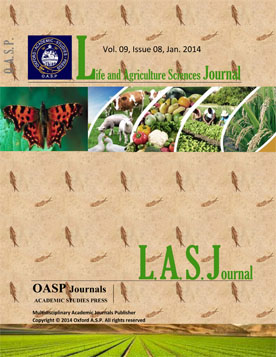Download Center
 |
EFFECT OF FREEZING PRESERVATION ON COOKING QUALITY AND CYANOGENS CONTENT OF FRESH CASSAVA ROOTS Life and Agriculture Sciences Journal (LASJ), Volume 2, Aug 2017 Abstract
The consumption of fresh cassava roots is strongly affected by its short shelf life and the presence of cyanogenic glycosides compounds (CNp) that are toxic to humans and animals. A study was carried out to determine the effect of freezing preservation on cooking quality and CNp content of fresh cassava roots. Fresh cassava roots were frozen at -20oC and the pH, color change, the cooking time and cyanogens content were measured during a period of one month. Two varieties were used: a sweet variety (Munhassa) and a bitter variety (Nkussi). No significant changes were observed on pH and color of peeled frozen cassava roots after freezing. The cooking time was significantly reduced by 30% after one week of freezing. The CNp content was significantly decreased on both two varieties after one week of freezing, from 36,12 to 14,49 mg HCN/Kg dry weight on the sweet variety and from 1011,63 to 313,4 mg HCN/Kg dry weight on the bitter variety. From this work it can be concluded so far that preservation of cassava roots by freezing can be an alternative to increase the shelf life of fresh cassava roots. Author(s): L. MAGAIA, J. NUVUNGA, J. da C. FRANCISCO, L. TIVANA |
| Choose an option to locate/access this article/journal | ||
|
Editorial
The process of peer review involves an exchange between a journal editor and a team of reviewers, also known as referees. A simple schematic of OASP's Peer-Review process has been shown in this section.
